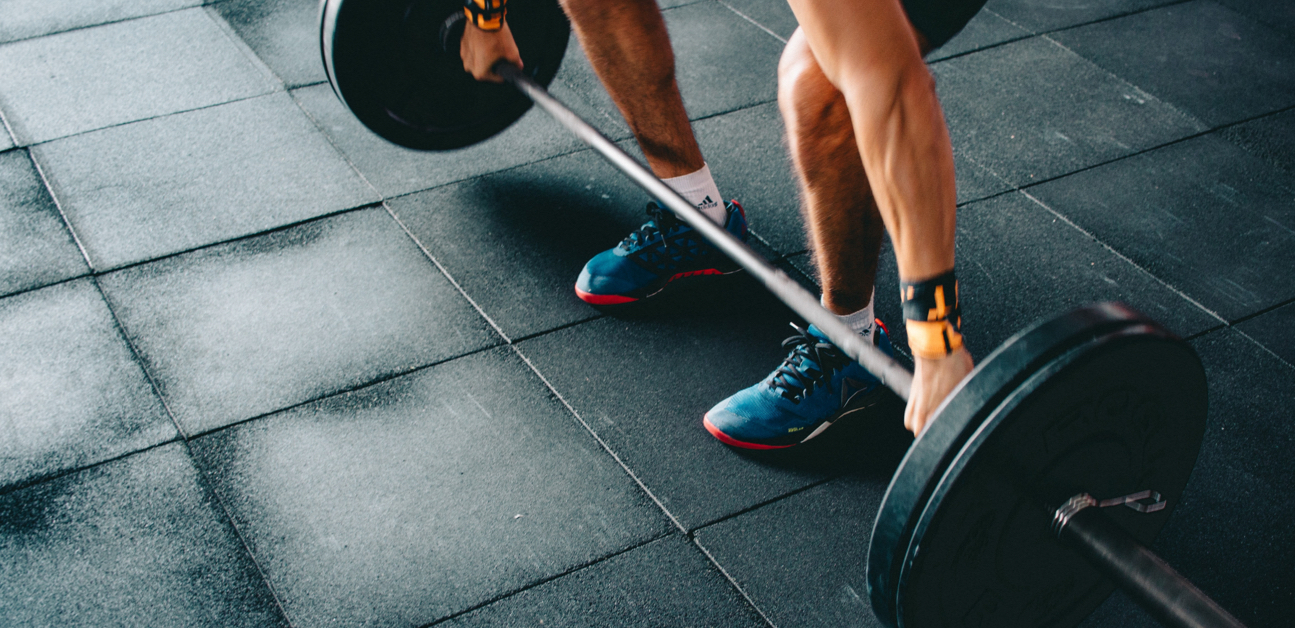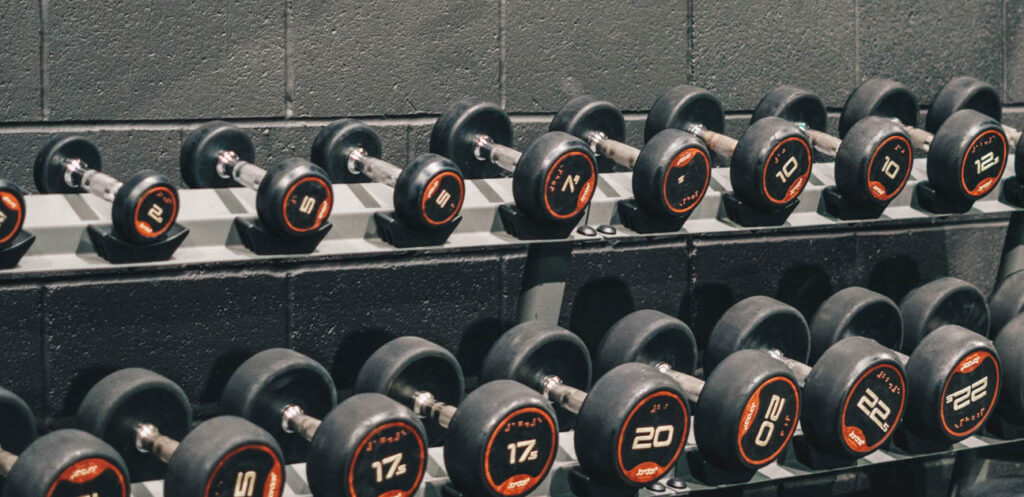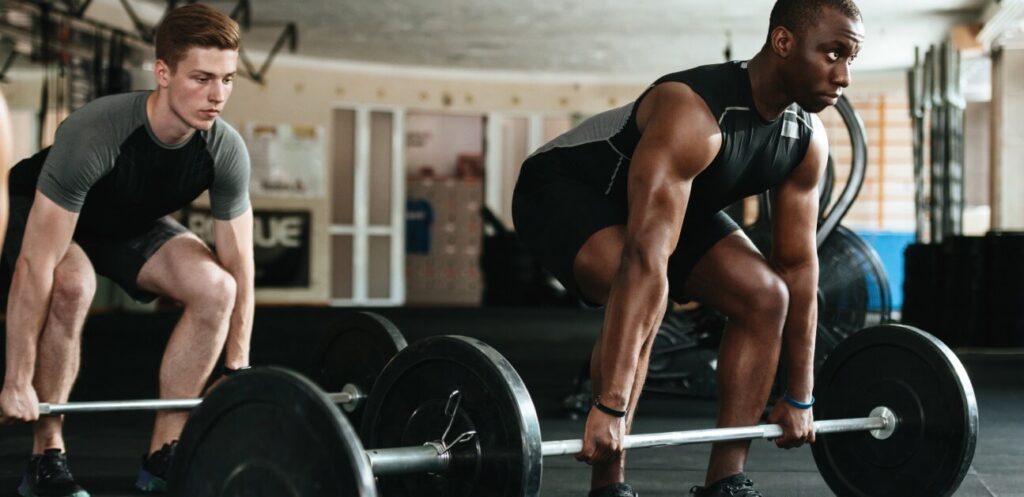Combining Cycling & Weight Training: How to Time Your Workouts

If you want to become a faster cyclist, it’s time to start strength training. Figuring out when and how to add it to your cycling training during the season doesn’t have to be confusing. In this guide, we’ll cover how and when to combine strength and cycling training.
Tips for Combining Strength and Cycling Training
- Prioritize cycling training by doing it before strength training.
- If you combine strength and cycling on the same day, separate them by at least six hours.
- Always keep at least one rest day each week.
- When you do combine cycling and weight training, find out what works best for you.
Offseason Strength Training for Cyclists
The offseason presents the best time to begin strength training for cyclists. With the overall reduction in aerobic exercise, there’s little risk of strength training compromising the quality of your rides. If you are new to strength training, it’s a good idea to start slow with little or no weight and focus on proper form. Once you have a good grasp of the movements, you can add more weight.
Lifting weights for cycling is all about improving functional strength and increasing performance. A cyclist’s strength training program will look markedly different than a bodybuilder’s. The key is to avoid lifting to failure with high repetitions. That’s the recipe for hypertrophy or muscle growth. Instead, heavy weights and low reps are the way to build strength without increasing muscle mass. But you have to work your way up to using heavier weights. Jumping into heavy lifts without preparation is likely to lead to injury. The offseason provides an excellent opportunity to prepare your body for that type of work.
Adaptive Training
Get the right workout, every time with training that adapts to you.
Check Out TrainerRoadSpending two to three times a week of strength training is plenty for most cyclists in the offseason. If you want to increase muscle mass, this is a good time to do it. Additionally, it’s an excellent time to focus on muscle imbalances with unilateral exercises like lunges, split squats, and single-leg deadlifts, before concentrating on traditional bilateral lifts like the squat and deadlift. Just remember to take it slow and allow your body to adjust to this new form of stress.
How Often Should a Cyclist Lift Weights During the Season?
During the season, your strength training should mimic the progressive nature of your cycling training. For recovery weeks, cut back on the gym sessions to ensure that you are resting enough to drive those adaptations. Additionally, make sure to keep at least one rest day per week. Constant training stress without a break will only lead to burnout or injury.
Increasing your performance with strength training doesn’t require a massive time investment. You get enough metabolic stress from cycling, and the gains you’re after in the gym are largely neuromuscular. So, give yourself three to four minutes between sets to fully recover. Lifting to failure is not necessary to increase strength and will compromise your on-the-bike training.
During the Base Phase
During the Base Phase, lifting weights two or three times a week is enough to increase your strength. If you started lifting in the offseason, this is the time to introduce bilateral lifts like the back squat, deadlift, bench press, barbell row, and military press. However, if you are just starting, make sure to spend time on form and technique before loading on the weight.
During the Build and Speciality Phases
The Build and Speciality Phases bring an increase in cycling workout intensity, so it’s best to reduce your strength training volume. You can shift to one or two lifting sessions a week and emphasize core-specific work. The Build Phase is the best time to transition to heavier lifting with fewer reps in each set (3 sets of 5 reps). In the Speciality Phase, cut it back to just one time a week. This will help ensure you reduce fatigue before the big event.
How Do You Combine Strength Training and Cycling on the Same Day?
Adding strength training is straightforward for low-volume cyclists—add it to a day when you’re not on the bike. However, this usually means doubling up at least once a week for higher volume cyclists, if not more. There are two main concerns when combining both strength and endurance training on the same day.
Preserving Workout Quality
When doing both cycling and strength training on the same day, it’s nearly impossible for one not to affect the other. The stress and fatigue incurred in the first workout will reduce the quality of the second one. One solution is to prioritize one or the other. Additionally, you can pair your strength training days with easy to moderate difficulty rides.
In general, we recommend prioritizing your cycling training by doing it first. Then, with as much time in between as possible, completing your strength training. However, there’s an exception to this. If you’re new to strength training, we recommend lifting first and then training on the bike. This helps avoid fatigue-driven mistakes in form and technique that can lead to injury. Once you have a handle on the movements, feel free to switch the cycling workouts back to the mornings.
Cell Signaling
Aside from preserving workout quality, another concern with concurrent endurance and strength training involves different cellular signals. In response to training, your body produces special enzymes called kinases that regulate biological processes. Two kinases essential to endurance and strength training are AMPK and mTOR.
AMPK (adenosine monophosphate-activated protein kinase) is activated when you expend cellular energy (ATP) and essentially regulates all the things you’re after with cycling training. It increases fat burning and glucose uptake while limiting other energy-consuming functions, all of which ensure you have the energy to perform endurance work.
mTOR (mammalian target of rapamycin) is the kinase that has a vital role in protein synthesis and cellular growth—precisely what you want from strength training. Either form of training activates both of these kinases. However, mTOR is more activated by strength work, while there is greater AMPK activation through endurance training.
The key point in cell signaling is that AMPK and mTOR have different goals. AMPK limits energy-consuming processes, including protein synthesis and cellular growth, to ensure you have enough energy to survive, while mTOR wants to build and grow. Not only do these have different goals, but they also inhibit one another. So we don’t want both signals active at the same time.
How are you supposed to combine strength and cycling training on the same day with competing cellular pathways? Research suggests separating your workouts by at least six hours. But more time in between is even better. Just be sure not to work out too late and compromise a good night of sleep.
How Often Should A Cyclist Lift Weights?
Let’s take a look at a few examples of scheduling strength training two times a week and keeping Monday as a rest day. The general recommendation is to prioritize the high TSS or hardest rides on your calendar and keep your hard days hard and the easy days easy. However, everyone handles the additional stress of strength training differently.
For some, this means completing strength training after the harder rides on Tuesdays and Thursdays. For others, this means doubling up on the easy to moderate days. The key is to schedule your strength training session with what works best for your schedule, preserves workout quality, and gives you the best chance at recovery.
These are the default workout days for TrainerRoad plans, but you can customize this to fit your schedule using Plan Builder. It’s important to remember that strength training stresses the body and you will need additional recovery. If strength is a limiter and you need more recovery time, try reducing your cycling volume to a mid- or low-volume plan.
Low-Volume Training Plan

In this low-volume plan, incorporating strength workouts is easy because there are only three cycling workouts during the week, leaving ample time for recovery. You have plenty of options to add a strength workout on Wednesday, Friday, or Sunday, or you could double up with the cycling training preserving four rest days.
Mid-Volume Training Plan

Incorporating strength training with a mid-volume plan gives you a few options. You can add one strength workout on Friday and the other on either Tuesday, Wednesday, or Sunday, but it comes with the cost of losing a rest day. A second option would be to pair strength training with hard Tuesday and Thursday ones or with the moderate workouts on Wednesday and Sunday. This gives you two rest days but at the cost of combining lifting and cycling workouts two times a week. The best option is the one that helps you balance recovery with training.
High-Volume Training Plan

Finally, in a high-volume plan, both strength workouts will have to be paired up with a cycling one. One option is to strength train after the difficult Tuesday and Thursday rides. The other will be to combine them with the easy Friday ride and either moderate workouts on Wednesday or Sunday.
It’s important to remember that balancing weight and cycling training is as much a scheduling issue, as a recovery one. Sometimes, you just can’t get to the gym on the optimal day or time. It’s important to remember that any strength training is better than none. Remember, pay attention to how your body responds to the additional stress of combining the two. You may find that you need to incorporate an extra rest day into your week.
Strength Training for Maintenance
When do you need to stop strength training? The short answer is never. Strength is a use or lose endeavor. The good news is that once you’ve built functional strength, it’s relatively easy to maintain with one session a week.
We’ve created a set of strength benchmarks to serve as goals for endurance athletes seeking to improve endurance capabilities, quality of life, and injury prevention. There are three levels based on cycling disciplines. Past the highest level, we don’t see the benefit of added strength outweighing the cost of added muscle mass and time spent on strength training. Just remember to maintain what you have with one strength session a week.
References and Further Reading
- Holczer, M., Hajdú, B., Lőrincz, T., Szarka, A., Bánhegyi, G., & Kapuy, O. (2019). A Double Negative Feedback Loop between mTORC1 and AMPK Kinases Guarantees Precise Autophagy Induction upon Cellular Stress. International journal of molecular sciences, 20(22), 5543. https://doi.org/10.3390/ijms20225543
- Hindupur, S. K., González, A., & Hall, M. N. (2015). The opposing actions of target of rapamycin and AMP-activated protein kinase in cell growth control. Cold Spring Harbor perspectives in biology, 7(8), a019141. https://doi.org/10.1101/cshperspect.a019141
- Lee, M. J., Ballantyne, J. K., Chagolla, J., Hopkins, W. G., Fyfe, J. J., Phillips, S. M., Bishop, D. J., & Bartlett, J. D. (2020). Order of same-day concurrent training influences some indices of power development, but not strength, lean mass, or aerobic fitness in healthy, moderately-active men after 9 weeks of training. PloS one, 15(5), e0233134. https://doi.org/10.1371/journal.pone.0233134
- Marcinko, K., & Steinberg, G. R. (2014). The role of AMPK in controlling metabolism and mitochondrial biogenesis during exercise. Experimental physiology, 99(12), 1581–1585. https://doi.org/10.1113/expphysiol.2014.082255
- Sanchez, A. M., Candau, R., & Bernardi, H. (2019). Recent Data on Cellular Component Turnover: Focus on Adaptations to Physical Exercise. Cells, 8(6), 542. https://doi.org/10.3390/cells8060542
- Tokunaga, C., Yoshino, K., Yonezawa, K. (2004). mTOR integrates amino acid- and energy-sensing pathways, Biochemical and Biophysical Research Communications, 313(2) https://doi.org/10.1016/j.bbrc.2003.07.019.
- Vissing K, McGee S, Farup J, Kjølhede T, Vendelbo M, Jessen N. (2013) Differentiated mTOR but not AMPK signaling after strength vs endurance exercise in training-accustomed individuals. Scand J Med Sci Sports. doi: 10.1111/j.1600-0838.2011.01395.x.
- Xu J, Ji J, Yan XH. Cross-talk between AMPK and mTOR in regulating energy balance. Crit Rev Food Sci Nutr. 2012;52(5):373-81. doi: 10.1080/10408398.2010.500245. PMID: 22369257.
- Yoon, Mee-Sup. mTOR as a Key Regulator in Maintaining Skeletal Muscle Mass. Frontiers in physiology vol. 8 788. 17 Oct. 2017, doi:10.3389/fphys.2017.00788

